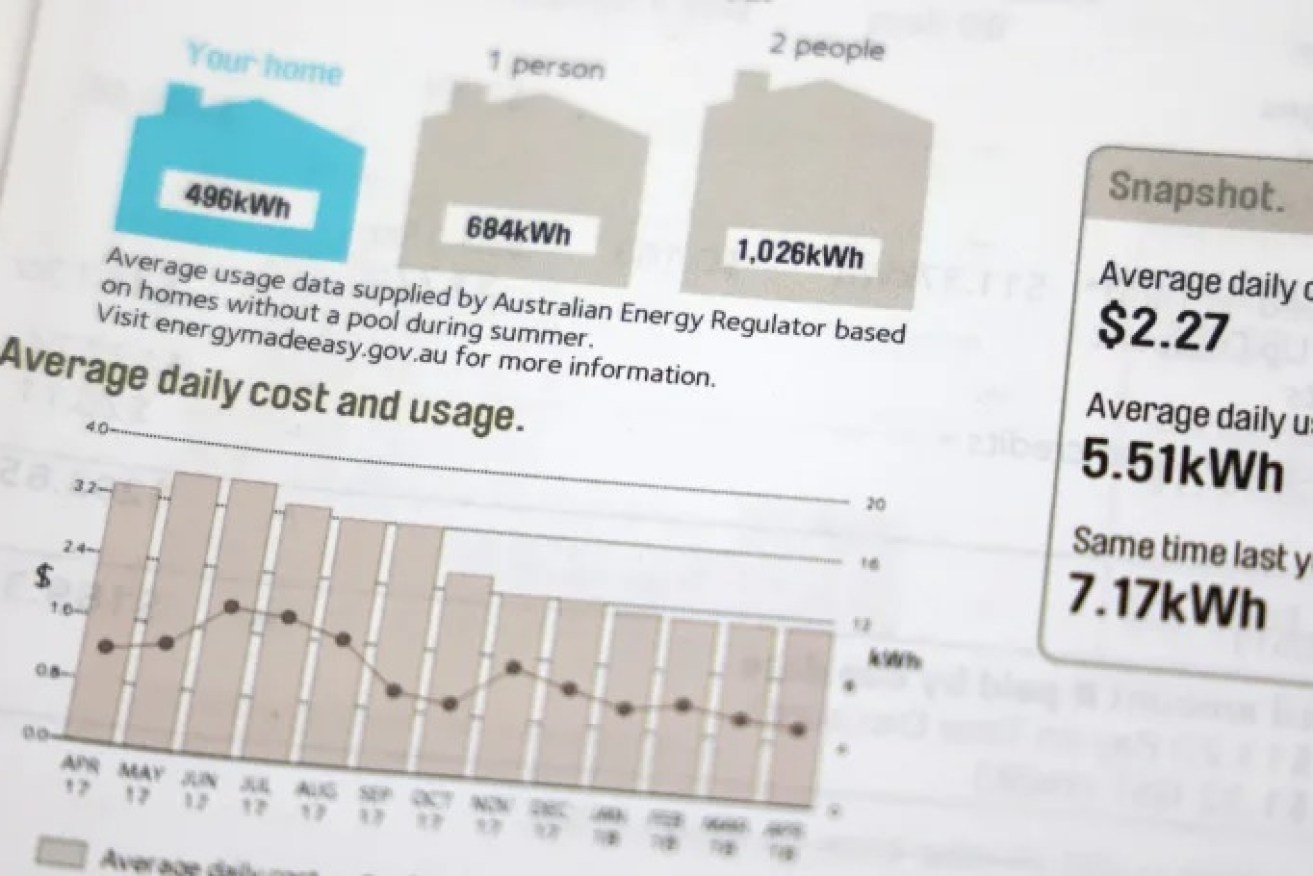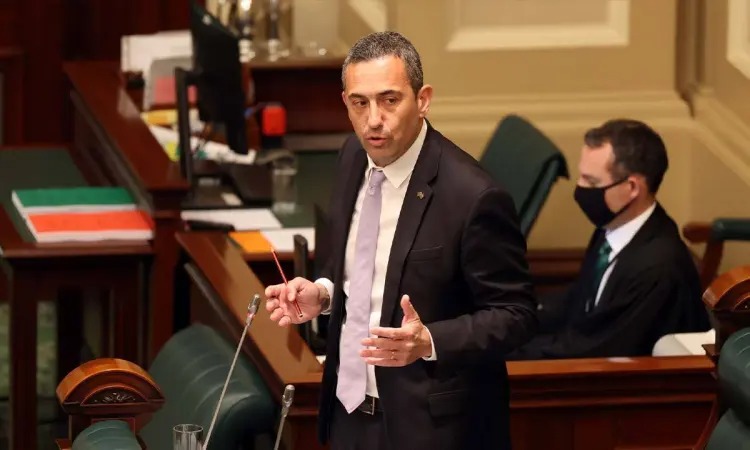Power bill shock to hit SA homes and businesses
The Malinauskas Government is “actively considering” expanding cost-of-living support after Australia’s energy regulator flagged that electricity bills will rise by more than 20 per cent for some South Australian households and businesses in coming months.


Photo: David Mariuz/AAP
The Australian Energy Regulator (AER) on Wednesday released its draft default market offer (DMO) for the 2023/24 financial year, foreshadowing a year-on-year electricity price increase between $401 and $485 for some South Australian households and $1151 for small businesses.
The DMO is a regulated price cap that outlines the maximum price energy retailers can charge customers who have not shopped around for a better deal. The majority of customers are on lower, discounted rates.
In South Australia, there are 62,600 residential customers (7.8 per cent of SA’s consumer market) who will be directly impacted by the draft price hike, along with 13,778 small businesses (15.9 per cent).
South Australian DMO households using 4200 kWh of electricity a year plus 1200 kWh of controlled load (separately metered tariffs used for appliances such as electric hot water storage systems) will face a 21.3 per cent increase in their power bills, rising $485 to $2760 a year.
South Australian DMO households without controlled load will face a 21.8 per cent increase, rising $401 to reach $2241.
Small businesses without controlled load will pay $5690 if they use 10,000 kWh annually, representing a $1151 year-on-year increase.
This 25.4 per cent hike for South Australian small businesses is the highest draft price increase across New South Wales, Tasmania, the ACT and Queensland.
The AER will make a final determination on May 26 before the price hikes come into effect on July 1.
Australian Energy Regulator chair Clare Savage said there had been unprecedented volatility in wholesale electricity markets due to high coal and gas prices and outages at coal-fired power plants.
“We know this (price increase) is difficult news for customers who are facing cost-of-living pressures … 20 to 22 per cent is still a significant increase, but it is much lower than it would have otherwise been,” she said.
Without the federal government’s energy market intervention to cap coal and gas prices, the AER warned the residential offer could increase by more than 50 per cent in some regions.
But South Australian Council of Social Service (SACOSS) CEO Ross Womersley said the AER’s draft DMO “transmits the signal that South Australians – particularly those living in hardship – will find it tougher and tougher to afford their energy”.
“Ultimately energy prices continue to rise, and this means South Australians will continue to spend more of their budgets on ensuring they have an essential service,” he said.
The impact of ongoing rising energy costs is felt most acutely by those South Australians who can least afford it.
“For every additional household that enters hardship status or payment plans, or is disconnected for being unable to meet their payments, that represents hundreds and hundreds of South Australians facing a reckoning around the supply of a service that they simply cannot be without.”
The latest cost of living blow comes with South Australians already paying among the highest power bills in the nation.
According to research released by consumer choice group Canstar Blue in January, the average quarterly electricity bill for South Australian households is $322.
The December survey, which polled more than 4400 Australian households, found only Tasmania had higher average quarterly prices ($330). Households in Western Australia are paying the lowest average electricity bills ($248), followed by the ACT ($263) and Queensland ($276).
The findings align with an SA Productivity Commission report released in August 2022 which found South Australian retail consumers “continue to face the highest electricity prices across the (National Electricity Market)”.
Premier Peter Malinauskas today said the state government was “actively considering” measures to help South Australians with power bills.
“We appreciate that an escalation in electricity prices of that quantum has a real-world impact on a lot of South Australian and indeed a lot of South Australian businesses,” he told ABC Radio Adelaide.
Malinauskas highlighted his government’s one-off initiative to double the cost of living concession – open to eligible seniors, Centrelink recipients and low-income earners – for the 2022-23 financial year, but said: “I do think we need to turn our minds to what else we can do, particularly in the energy space.”
“The number of 22 per cent is a lot less than what was forecast in October last year and late last year, but it’s still a big hit,” he said.
“People appreciate that as a Labor Government we’ve got a particular predisposition towards providing the most assistance to those who are most vulnerable in our community, think pensioners on fixed incomes.”
He said while concession card holders and people on fixed incomes will be prioritised for support, the state government would look at expanding eligibility for energy concession relief.
“We are actively turning our minds to how we can expand the scope of the number of people that would be eligible for assistance the state government provides in energy concession relief.”
Currently, the state government’s energy concession relief provides eligible seniors, Centrelink recipients and low-income earners up to $241.63 a year to cover energy payments.
ConcessionsSA, which administers the payment, reports on its website that it is “receiving a high number of applications and enquiries, causing longer than usual processing times”.
The state budget is expected to be handed down on June 15.
Energy Minister Tom Koutsantonis today said the AER’s decision confirmed that the Albanese Government’s price caps on coal and gas producers have “been decisive”.
“A 21.8 per cent increase for South Australians is obviously significant but the pain of these increases is shared across the country,” he said in a statement.
“However without this intervention people would be paying around $660 a year more on their power bills.
South Australians will still feel price pain, but no more than elsewhere around the country – and we are not an outlier.
“There will be further measures to protect those who need it most.”

Energy Minister Tom Koutsantonis. Photo: Tony Lewis/InDaily
Opposition energy spokesperson Stephen Patterson said AER’s draft determination was “incredibly concerning news for South Australian families who will now need to find over four hundred extra dollars so they can pay their electricity bills during a cost of living crisis”.
“This South Australians are already experiencing massive increases in the costs of everyday essentials, but Labor doesn’t have a plan to ease these growing pressures.
“Peter Malinauskas must outline a new strategy to help South Australians battle rising energy prices during this cost of living crisis.”
The state government in January formally asked the private sector to provide it with ideas and advice on how to protect South Australian households from power price increases.
It has also asked the Essential Services Commission of SA to conduct an inquiry into energy companies potentially reaping unjustified profits from the national energy situation.
ESOCSA is due to submit a draft report in May.




